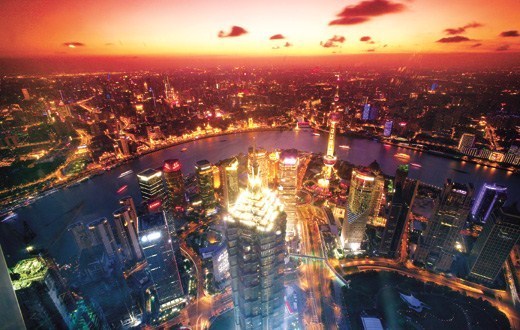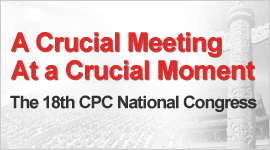72 hours in Shanghai
 0 Comment(s)
0 Comment(s) Print
Print E-mail Shanghai Daily, November 2, 2014
E-mail Shanghai Daily, November 2, 2014
Since the beginning of this year, Shanghai has offered foreign tourists a 72-hour window to explore the city without a visa, following the introduction of a new policy for transit passengers from 45 countries. The city's airports - Pudong International Airport and Hongqiao Airport - have set up special visa-free channels for these passengers.
The 45 countries include much of Europe, plus the United States and Canada, Argentina, Brazil, Australia, New Zealand, Singapore, Brunei and the United Arab Emirates, among others.
So if you're in transit, why not take the opportunity to explore the city? Here are the iDEALShanghai choices for getting the most out of three days in this vibrant metropolis.
The first day: sightseeing
If you're on a 72-hour trip to Shanghai, you're well advised to seize every moment. And for transit passengers landing at the Pudong International Airport, that can start with the maglev train (50 yuan/US$7.9 one way) linking the airport to Metro Line 2.
Traveling on the magnetic levitating train that can exceed 380 kilometers per hour provides a thrilling start to your stay. Within eight minutes, you can transfer to Line 2, which crosses the Huangpu River and links Shanghai's busiest areas, including Pudong Lujiazui hub, People's Square and the Jing'an Temple.
For foreign visitors to Shanghai, Chenghuang Temple - or the City God Temple - is a must-see.
Transfer from Line 2 to Line 10 at People's Square and you will soon be at the bustling temple, with its traditional architecture, colorful folk cultures, crafts and local snacks. Chances are you'll also encounter one of its biggest characteristics - seas of people.
At the Chenghuang Temple Fair, "the kingdom of snacks," you can eat to your heart's content. Mouthwatering options include vegetable pastries from Song Yue Restaurant for vegetarians and Buddhists; Nanxiang's xiaolongbao - pork-filled buns served in bamboo steamers; pigeon's egg dumplings from the Osmanthus Hall; rose rice cake at the 450-year-old Lu Bo Lang (Green Wave Porch) Restaurant, which counts former US President Bill Clinton among previous customers.
After a feast, you can relax with a cup of green tea on the second floor of Huxin Pavilion and idle away an hour or two people watching.
Or stroll around the area to discover some local handicrafts and antiques hidden in the small lanes and venture into the temples and shrines - all helpful for burning off some calories gained from the snacks.
One of the best ways to get a feel for the city is to see its old architecture. Take a taxi or a brisk walk from the City God Temple to the Bund, where the buildings reflect Shanghai's colonial history from the late 1800s to the early 1900s. Westerners came to Shanghai to do business, bringing their own influences - including architecture - with them.
The buildings stretch 1.5 kilometers along the west bank of the Huangpu River that divides the city in half, providing a counterpoint to the glitzy skyline of the spectacular high-rises in Pudong on the east bank.
The 52 buildings on the Bund represent a diversity of styles, including Gothic, Romanesque and Baroque, leading to the stretch being dubbed the city's Gallery of World Architecture.
If you're in need of refreshment, enjoy English afternoon tea at the lobby of the Peninsula Hotel at the northern tip of the Bund or sip Japanese sake at the Bund 5.
Wukang Road is another top location for seeing the city's Western architecture heritage. Unlike the noisy and busy Bund, this 1,200-meter street in Xuhui District flanked by phoenix trees is a quiet spot.
Located in the picturesque former French concession, Wukang Road features a number of old beautiful villas - including mock Tudor-style - and gardens. Many celebrities and politicians of old China lived on the street.
You can rent a bicycle on the road (300 yuan deposit and 2 yuan for the first hour, 4 yuan an hour thereafter) and take your time to explore the old stories hidden behind those ancient wooden doors.
When night falls, sample some of the city nightlife. On and around Hengshan Road are numerous restaurants, bars and night clubs, among many options in the former French concession. Around the Bund too are vibrant restaurants, clubs and other nightlife.
If all this partying sounds too much, you might want to take a stroll along the Huangpu River bank pathway, with the gentle breeze and twinkling lights your companions.







